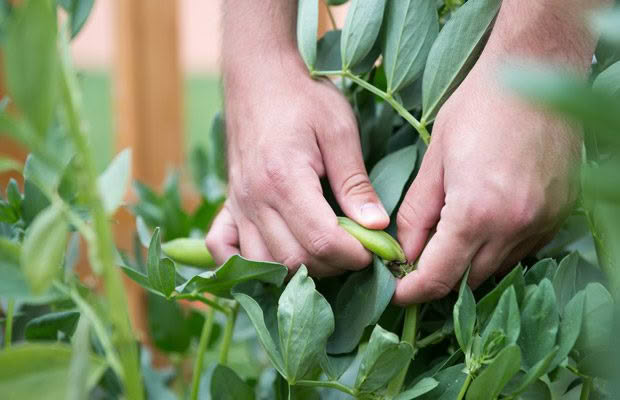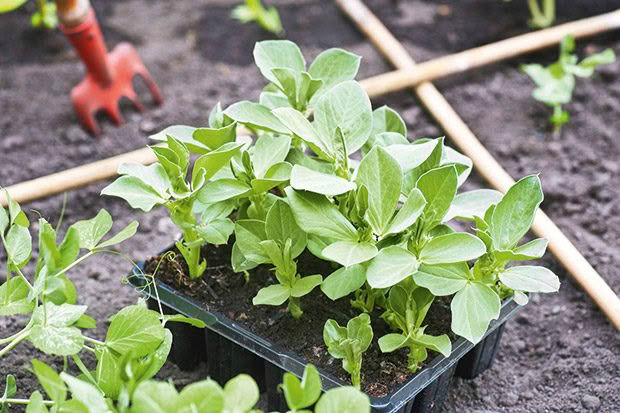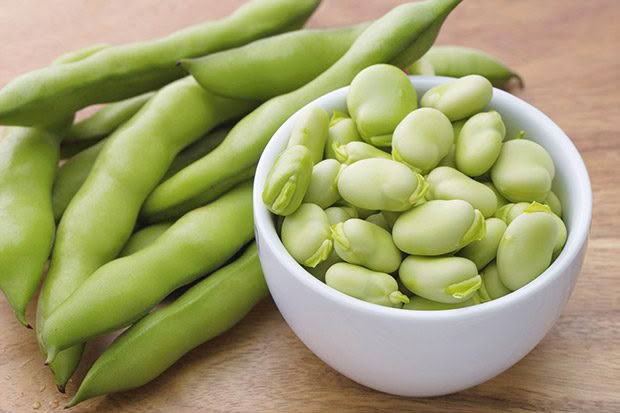4 tips for growing broad beans (plus how to cook with them)

There’s just one bean that can survive the worst of winter and can be planted through spring.
Broad beans attract the most vitriolic comments of all the vegetables I grow. There are lovers and haters, and nothing in between. My husband can’t stand them. As a broad bean lover, I don’t understand why.
The first early broad beans are the highlight of my spring vegetable garden and I grow three double rows every year, just for me. These give me frequent feasts of early, immature beans, a deliciously tender, flavoursome gourmet treat.
Old beans, harvested too late, are barely recognisable as the same vegetable. They have a tough, whitish seed coat, and are starchy, pithy, and strong-flavoured. I suspect this is why broad beans have a bad name, along with over-cooking, and a lack of imagination by chefs.
But even tender, early crops don’t tempt my husband, and as he’s the family cook, this poses a problem. He will pick the pods and cook or steam the beans for me but won’t eat them. He has flatly refused to try the numerous inspirational recipes I have passed onto him over the years.
2 REASONS TO GROW BROAD BEANS
Late winter and spring are known as the ‘hungry gap’ in the garden. It’s when winter vegetable crops are finished, but it’s too cold for anything else. Daffodils spring up, the first fruit tree blossoms bravely peek out, and seedlings start bursting out of the ground. There’s the promise of food, but very little of it.

Step up, easy-to-grow broad beans.
These rugged plants germinate in the cold (April-May, when little else will), and continue to grow through frost, snow, anything, with next-to-no attention. They can continue to be planted until early spring. As they grow, they efficiently fix nitrogen in the nodules on their roots, improving soil health.
Beans are good for you too. They’re an excellent source of plant protein, high in vitamin A, B vitamins, iron, potassium, and manganese. They’re also rich in dietary fibre and slow-release carbohydrates, making them a great choice for people with diabetes.
4 TIPS TO GROWING BROAD BEANS

■ Broad beans like an open, sunny site protected from the wind. Soil should be well-manured, pH 6-7, and moisture-retentive (to provide enough water when pods are filling). Broad beans tolerate clay better than other bean plants.
■ Sowing can be staggered monthly, from March, to extend the harvest season. You can soak seeds for up to 12 hours to speed germination, but I have found germination is excellent if the soil is thoroughly rained on after sowing.
■ Broad beans are best sown direct in double rows, 10-15cm apart, with a few extras at the end of the row to replace
any losses. It’s a good idea to cover the seeds, leaving a slight hollow above for collecting water
■ I usually grow dwarf varieties such as Coles Early Dwarf, but even these will reach at least a metre high and need staking. If broad beans are un-staked, spring winds will eventually lay them flat. Tall-growing varieties can be stopped by pruning when 1m high or when beans form on the lower trusses. Stakes should be strong and driven into the subsoil to support the weight of plants. A light stake lashed to the upright stakes helps to support the tops.
BROAD BEAN PROBLEMS

Chocolate spot.
If plants fail to set flowers, it’s usually due to cold weather and/or a lack of bees. Chocolate spot is a fungal disease that causes brown spots on the leaves. Good drainage and air circulation will help prevent it.
HOW TO EAT BROAD BEANS OF ALL AGES

1. Whole pods
Harvest pods young (5-8cm), steam, and serve whole or sliced; or cook in boiling salted water until tender. Delicious with finely chopped chervil, parsley, and a little lemon juice.
2. Young growing tips
Young shoots (the first 10cm of the stem’s growing tip), can be eaten raw or cooked like spinach. Some people prefer broad bean shoots to spinach as they don’t create a ‘furry teeth’ sensation. Cook in a saucepan with 2 tbsp butter, a quarter of a cup of water, and salt, and simmer until just tender. Drain well and serve with butter and fresh black pepper.
3. Young beans
My preference is to eat the just-mature beans which have a fine, tender skin. Simmer shelled beans in salted water for 7-20 minutes until just tender (time varies with age). Serve with butter and freshly ground black pepper, chopped savory or parsley, finely chopped bacon, mushrooms, parsley sauce, and grated cheese.
4. More mature beans with a tough outer skin
‘Double podding’ is recommended. Pop the beans out of the pod. Cook the beans in boiling water for 1-2 minutes, drain, refresh with cold water, then squeeze the bright green bean out of its ‘skin’.
Dealing with a glut: If you have too many beans, freeze them. Wash thoroughly, blanch for 3 minutes, then freeze. Use within 12 months. They can also be dried.
Warning: Those with favism, a rare hereditary disease, should not eat broad beans as it can trigger symptoms.
Love this story? Subscribe now!
 This article first appeared in NZ Lifestyle Block Magazine.
This article first appeared in NZ Lifestyle Block Magazine.
